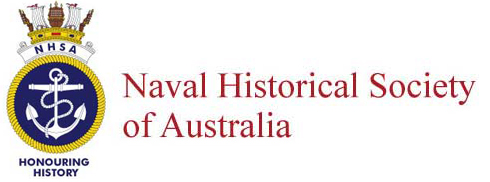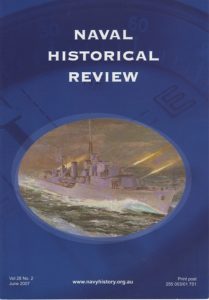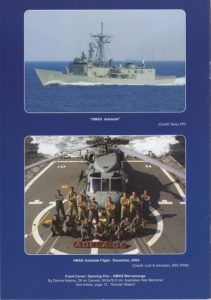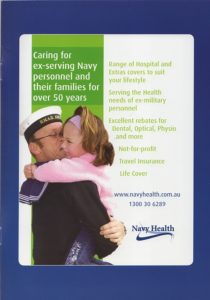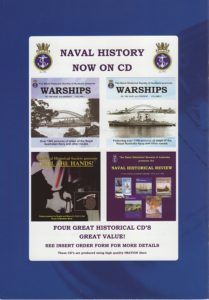- Author
- Haken, J.K., Dr
- Subjects
- Biographies and personal histories, Ship histories and stories, History - pre-Federation
- Tags
-
- RAN Ships
- None noted.
- Publication
- September 2024 edition of the Naval Historical Review (all rights reserved)
By Dr J.K. Haken
Thomas Brassey, later Lord Brassey, was a lawyer and Member of Parliament, and on a number of occasions between 1865 and 1895, a Civil Lord of the Admiralty. In 1896 he published a periodical, initially named Brassey’s Naval Annual,and was editor for many years. The work collated the many British and foreign naval publications and ceased publication in 1992. Throughout his life Lord Brassey published, lectured and offered his opinion on many matters, including naval and defence issues.
As a dedicated sailor, he championed an Act1 passed in 1873 which approved the formation of the Royal Naval Artillery Volunteers (RNAV), and this organisation continued until disbandment in April 1892. Thomas Brassey was knighted on 24 May 1881 for his services and on 14 August 1886 was elevated to the peerage as Baron Brassey of Bulkeley. The organisation and regulations of the RNAV were detailed in an 18742 publication by Brassey.
A Naval Artillery Volunteers (NAV) unit was raised in New South Wales on 28 November 1882 and subsequently authorised3. This NAV unit followed the British organisation, largely initiated and supported by Professor F. R. Cavill of the British body. The NSW unit outlived its British counterpart but was disbanded after Federation, largely due to financial restraints. Lord Brassey was further elevated in the peerage on 18 July 1911 becoming Earl Brassey and Viscount Hythe and was appointed as a Lord-in-Waiting to Queen Victoria in 1893.
An avid sailor, Lord Brassey owned and captained many yachts and is reported to have sailed more than 300,000 miles, including several voyages to the Australian colonies in his steam yacht Sunbeam. The 159-foot Sunbeam was built for him in 1874 by Bowdler and Chaffer, Seacombe. Some details are shown in the table below.
| Characteristic | |
| Manufacture name | Sunbeam RYS |
| Length | 159 ft (48.46 m) |
| Beam | 27.5 ft (8.38 m) |
| Draught | 13.75 ft (m) |
| Tonnage | 532 tons (483 metric tons) |
| Motive Power: Sail Area | 3 masts, 9000 sq yd (7525.152 m) |
| Motive Power: Steam | 2 cylinders 140 HP |
| Crew | 14-21 |
After Sunbeam was constructed, a voyage which circumnavigated the world was commenced. Lady Anne Brassey, Lord Brassey’s first wife, was a writer who travelled with her husband and published on their trips. A highlight of an 1880-1881 voyage around the world was visiting and entertaining King David Kalakaua of Hawaii. The King awarded Lord Brassey the honour of Knight Commander of the Royal Order of Kalakaua.
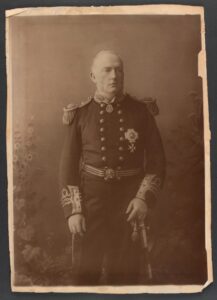
On another extensive voyage Sunbeam left Plymouth on 20 November 1886, bound for Australia and India. In early May 1887 the first port reached was Albany, then Fremantle, then a return to Albany before leaving for Adelaide on 18 May 1887.
The yacht then left for Melbourne on 3 June 1887 and a visit was made to Geelong and Ballarat. Funds were provided to be awarded as prizes for the local Naval Brigade. Sunbeam departed for Sydney on 30 June 1887 and arrived on 4 July 1887. The following day, a ceremonial entry to Sydney Harbor was staged by some 130 members of the NAV in a flotilla of small boats. Sunbeam left her mooring in Watson’s Bay and was joined at Bradley’s Head by boats manned by the NAV which escorted her to Farm Cove. Thousands of spectators viewed the entry from the Botanical Gardens and Lady Macquarie’s Chair. The boats formed two divisions and were led by the Commanding Officer of the NAV, Commander Lee. Lord Brassey attended the regular meeting of the NAV in the uniform of a Captain of the NAV. The NAV also held a banquet for the visitors at the Town Hall on 8 July 1887, with many naval and military officers attending.
On 9 July 1887 a special train carried the guests to a picnic at Hawkesbury, organised by the NSW Public Works. Sunbeam departed for Newcastle on 18 July 1887 and thence for Brisbane where she arrived on 24 July 1887. The yacht proceeded to Maryborough, Rock-hampton, Townsville, Cooktown and Thursday Island, and arrived at Darwin on 6 September 1887. After this visit to all of the Australian colonies, Sunbeam then commenced the long journey home.

Tragically Lady Anne Brassey died seven days out of Darwin and was buried at sea. Sunbeam arrived back in England on 15 December 1887 after a voyage of just over one year. The travels of the Brassey family were published in many editions.
Lord Brassey subsequently married Lady Sybil de Vere Capell on 8 September 1890 and later became Governor of the Colony of Victoria on 25 October 1895, his term ending on 31 March 1900. Lord Brassey was Governor at the time of considerable political activity when Federation was being deliberated. He also had the distinction of being a governor who provided his own transportation. On her voyage to Melbourne Sunbeam travelled via Cape Horn and during Lord Brassey’s time in Victoria, he visited Adelaide, Tasmania, Sydney, Brisbane and New Zealand.
While in Victoria, both Lord and Lady Brassey were keenly interested in sporting activities and donated and presented many trophies, including for polo and sailing. The departure of Lord Brassey at the end of his term as Governor corresponded with the departure of the second contingent to the war in South Africa when a parade led by Lord Brassey was held. Sunbeam travelled to Colombo, where Lady Brassey transferred to the mail steamer bound for London, arriving at the end of March. Lord Brassey and Sunbeam continued their journey home via Cape Town.
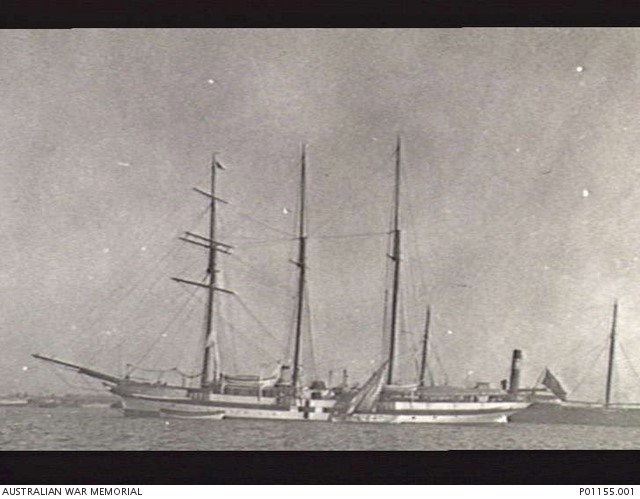
Back in Britain, at the time of becoming Earl Brassey he was appointed Lord Warden of the Cinque Ports. This post was extremely active in ancient times, but was now largely ceremonial. During World War I Sunbeam was converted into a hospital ship, and in conjunction with the Red Cross, brought soldiers to Britain, across the Channel from France. Sunbeam travelled to Gallipoli in 1915 but as the vessel was of limited value here as a hospital ship she was accepted by the Indian Government. Lord Brassey, although over 80, sailed Sunbeam to India. Earl Brassey died in England in 1918 aged 82 and his son, the Hon. Thomas Allnutt Brassey, became the second Earl Brassey. He died as a result of an accident in 1919 at age 56 and as he was childless, the Earldom became extinct.
Publications by Earl Brassey
Earl Brassey was author of many books, and only those relevant to this work are listed.
The Organisation of the Royal Naval Artillery Volunteers Explained, Longmans Green & Co., London, 1874.
The British Navy: Its Strength, Resources and Administration Vol IV, Longmans Green and Co., London, 1883.
The British Navy Vol V, Longmans Green and Co., London, 1883.
Voyages and Travels of Lord Brassey from 1862 to 1894, Longmans Green and Co., London, 1895.
Sunbeam RYS Voyages and Experiences in Many Waters, John Murray, London, 1917.
Publications by Lady Anne Brassey
A Voyage in the Sunbeam: Our Home on the Ocean for Eleven Months, Longmans Green & Co. London, 1879.
Lady Brassey’s Three Voyages in the Sunbeam, Longmans Green & Co., London, 1889.
The Last Voyage to India and Australia, in the Sunbeam Longmans Green & Co., London, 1889.
Notes
1 Royal Naval Artillery Act 1873
2 Brassey, Thomas, The Organization of the Royal Naval Artillery Volunteers, Longmans Green and Co., London, 1874.
3 NSW Government Gazette No 304 3847, 1883.
